How to treat a deck: our easy guide explains everything you need to know
Find out how to treat a deck and make sure yours looks its best all year round, whatever life might throw at it


It might look great now but you still need to find out how to treat a deck to keep it looking that way further down the line. Or maybe yours is already in need of a makeover to get it back to its best, or alternatively is brand new and you're not sure about how to protect it.
Either way, you need to find out how to treat and protect your deck so that it continues to look good as well as last for years. When you start looking into how to treat a deck you'll soon discover there are lots of products available out there, as well as plenty of contradictory and confusing advice.
So why not follow our expert guide and find out everything you need to know to keep your decking looking its best.
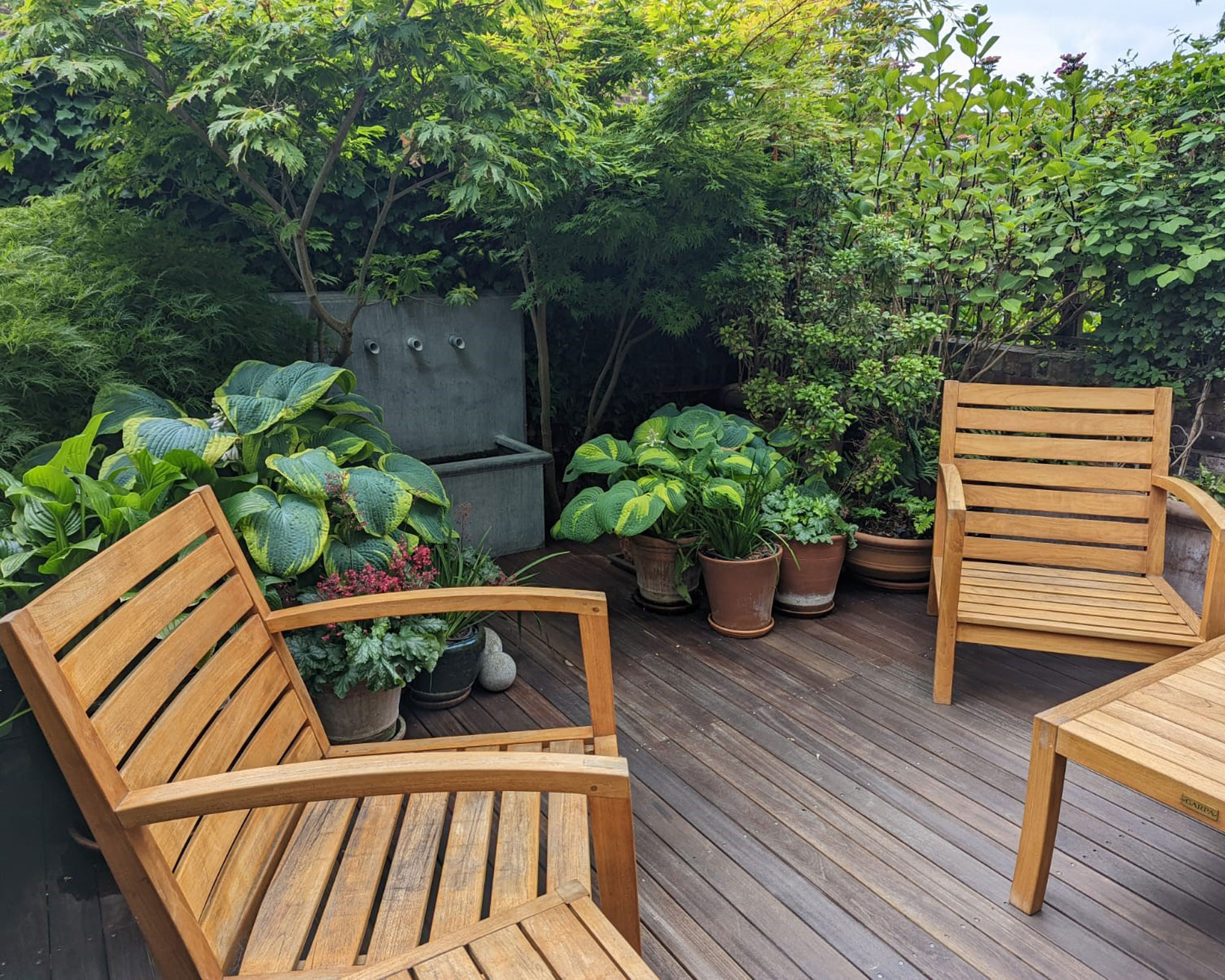
Learn how to treat a deck in 5 simple steps
Treating a deck is key to its longevity, protecting it from bad weather, potential mold and rot.
Whether you've taken the time to learn how to build decking yourself or have paid a company to fit it for you, follow these expert tips to make sure your deck lasts as long as possible.
1. Prepare your deck before treating it
First clear the deck. Remove any furniture, planters and garden ornaments from the deck area, and sweep away any dirt or debris. The decorating experts on the Homebase team suggest using a putty knife to remove debris wedged between the deck boards.
'Wash the boards and clean decking with a specialist deck cleaner, following the instructions closely,' suggests the team at Homebase. 'Some may require you to wet the deck beforehand, and some may require rinsing afterwards. Then, wash it off with a pressure washer or garden hose on a jet spray setting, before leaving it to dry for at least 24 hours.'
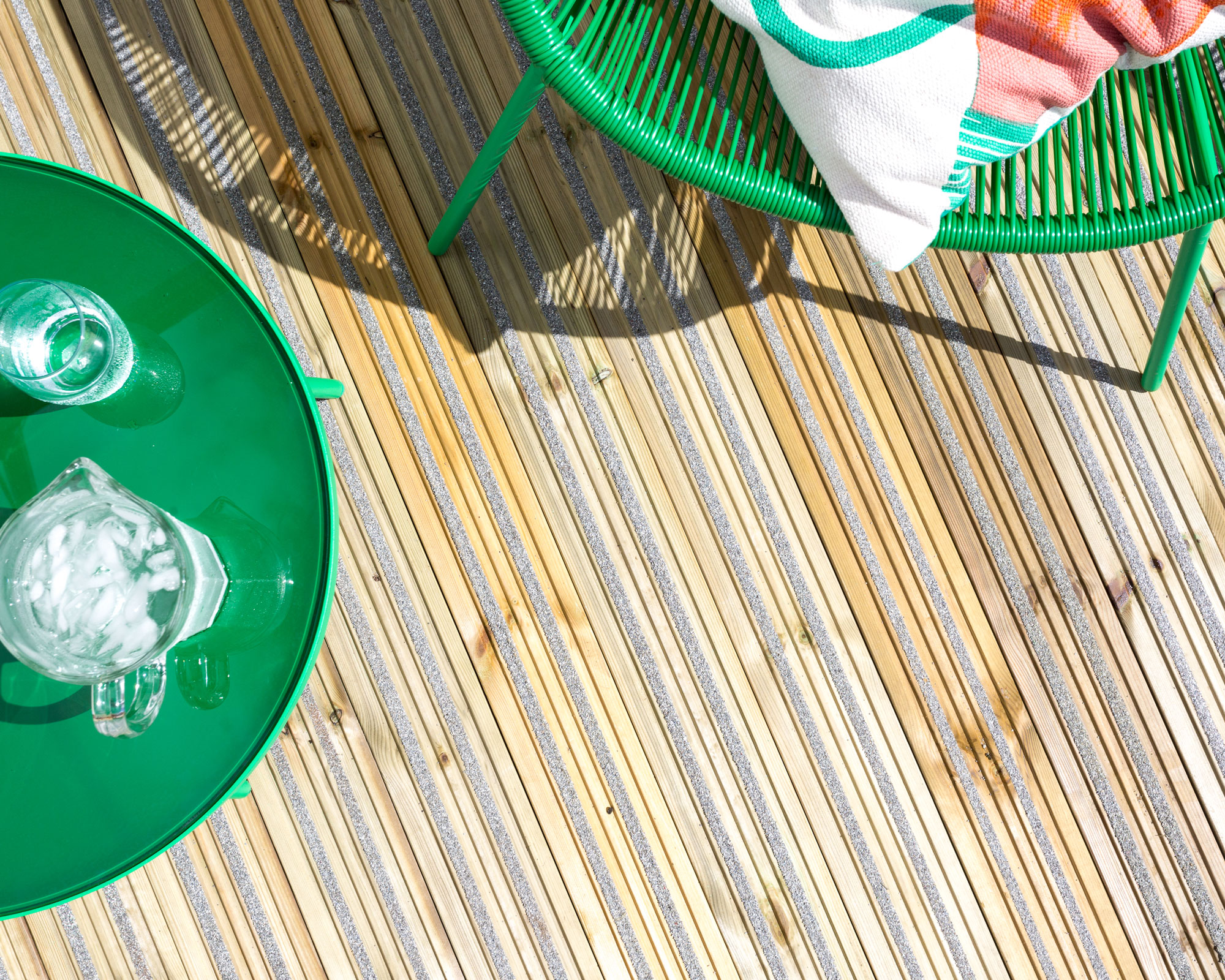
2. Allow decking to dry out properly
Once you've cleaned and washed your deck, be sure to let it dry properly too. 'All timber suffers from the denaturing process,' explains Matthew Brown of Sadolin. 'It's like the surface getting sunburnt and it must be removed before decorating. If you use a power washer this can force water into bare, exposed wood that can take up to a week to fully dry out.'
3. Sand your deck
The bare surface of your deck will then need sanding and degreasing to make good before you recoat it. Before treating your deck, make sure the surface is sound. Check for any splinters or cracks in the boards.
'Don’t decorate over something that isn’t okay,' says Matthew Brown. 'A good coating can’t make a poor surface into a good one. Preparation is 80% of the job. It’s laborious but the job looks much better afterwards and will last a lot longer.'
You may also need to remove mold, mildew or black spotting too in order to get your deck ready for a new finish to be applied. 'Look out a formulation that does this efficiently,' says V33 expert Richard Bradley. 'One with an impressive area of coverage (around 30m2/L) is ideal.'
Don't forget to factor this into your budget when working out how much decking costs.
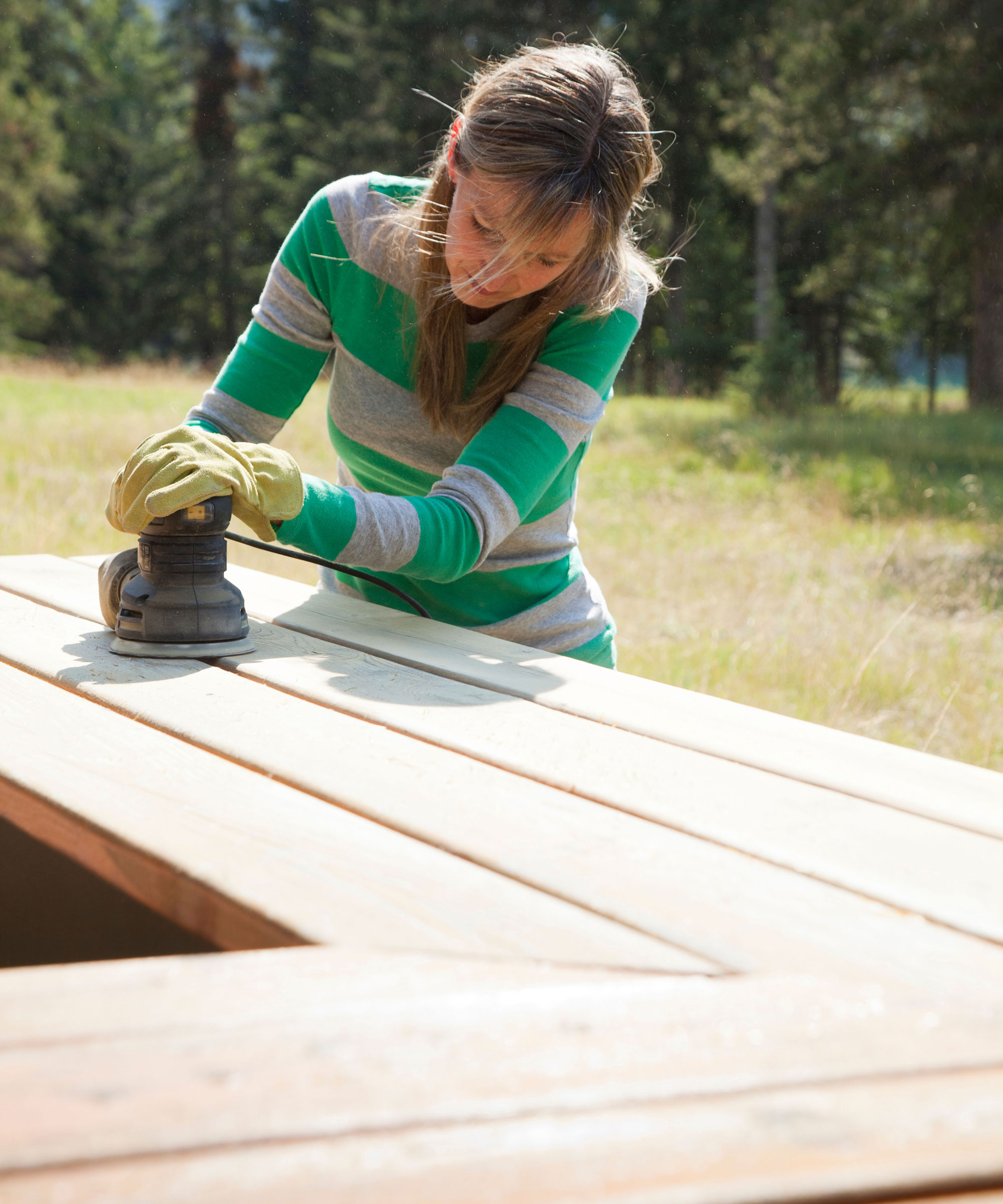
4. Choose your decking treatment
Whether you have a small deck, a raised deck or even a pool deck, there are a lot of products available for treating them, so consider what option will be best for your decking size, location and preferred look.
- If you like the look of natural wood grain go for a deck stain. It will protect and waterproof the deck but is more opaque than paint, so you can still see the detail.
- For a subtle color that enhances the beauty of the wood, choose a deck oil. It won’t crack as the deck expands and contracts. It will also soak into the timber, waterproofing and replacing natural oils and resins that are lost over time.
- Specialist deck paint comes in a big choice if you're looking for a new decking color idea, everything from natural and subtle to bright and bold. It can be used to disguise cracks and splinters, as well as protecting weathered wood. Find out more about how to paint decking if you like the sound of this.
- Opt for a deck protector to protect your decking from sunlight and rain, as well as wear and tear. It's translucent so won’t change the appearance of the wood but will help to prevent it from becoming faded and weathered.
5. Apply your chosen deck treatment
Whatever product you chose to use for treating your deck, the key thing to remember is to always apply them correctly.
'Use quality brushes,' recommends Matthew Brown. 'Natural bristles are best for solvent based and synthetic fibres for water based. Always lay off in the direction of the grain.'
'Laying off' means using gentle strokes both vertically and horizontally to redistribute the product in a more uniform fashion.
A quick tip is that it's also worth protecting any surrounding plants with plastic sheeting and using masking tape to cover up areas you don’t want the deck stain or oil to get onto.

When is the best time to treat a deck?
Spring or fall is the ideal time to spruce up your deck. This is because it's important to take into account weather conditions when planning a sprucing up project, not only while doing the job but also because of the amount of drying time required.
If it's too cold when you treat your deck this can lead to problems such as trapped moisture as things don't dry out properly before the temperature starts to drop again in the evening, especially when the days are shorter.
Meanwhile in the height of summer, direct sunshine can create very hot conditions, particularly on dark colors and surfaces, says Matthew Brown of Sadolin. 'If possible, avoid the common deck mistake of decorating in direct sunlight during the hottest part of the day. If you are able to, it's better to decorate in shadier conditions later on.'

Is it best to stain or seal a deck?
'A deck sealer tends to be clear in color or only slightly tinted in a natural color,' says Housetastic gardening expert John Dempsey. 'These are most commonly oil or water-based and work by soaking into the wood grain. This seals the wood and prevents moisture damage, rot, mold and mildew.'
Additionally, there are some versions of deck sealant that have additives to protect the wood against sun damage and UV rays. 'Deck sealer is best for high-quality woods such as teak, cedar, or mahogany as it can help to enhance the grain and natural colour of the wood,' adds John.
Staining a deck can help to protect the wood from moisture, mold, mildew, rot, sunlight, and UV rays. Stains can come in many colors, including transparent, semi-transparent and semi-opaque, as well as solid colors, which allows you to customize your deck according to your taste.
'Thicker colors tend to provide the most UV protection,' says John. 'Staining makes the grain on the wood less visible. Staining is perfect for materials such as fir, plywood, and spruce.'
Both sealing and staining a deck can easily be completed as a DIY job, so it doesn't have to cost a lot of money. But whether you ultimately choose to stain or seal your deck it's an ongoing job.
'It's important to remember that once a deck is laid the wood can experience slight movement and therefore whether you are sealing or staining you need to do so at least once a year to ensure you protect and nourish it,' says Nathan Gamba of London-based landscaping company Protea Gardens.
Should you treat a new deck?
'Most softwood timber products are supplied pressure treated to give the product the longest possible life,' says Ross Crouch of anti-slip decking experts Gripsure. 'Pressure treatment is essentially the process of impregnating timber with a chemical preservative designed to protect it against fungal attack, rot and decay.'
Pressure treated timbers are split into several different ‘classes’ which are created by using a different solution strength during the treatment cycle. 'It's important to make sure you pick the correct class for your specific requirements to ensure long lasting performance,' says Ross.
Brand new decking should be left to naturally weather until the pre-treatment has eroded. The decking will then be ready to be oiled or stained. 'It's recommended that you wait for around six months before applying anything new to your deck,' says John Dempsey. Once the pre-treatment has eroded, you can then treat the decking with stain or oil as normal.
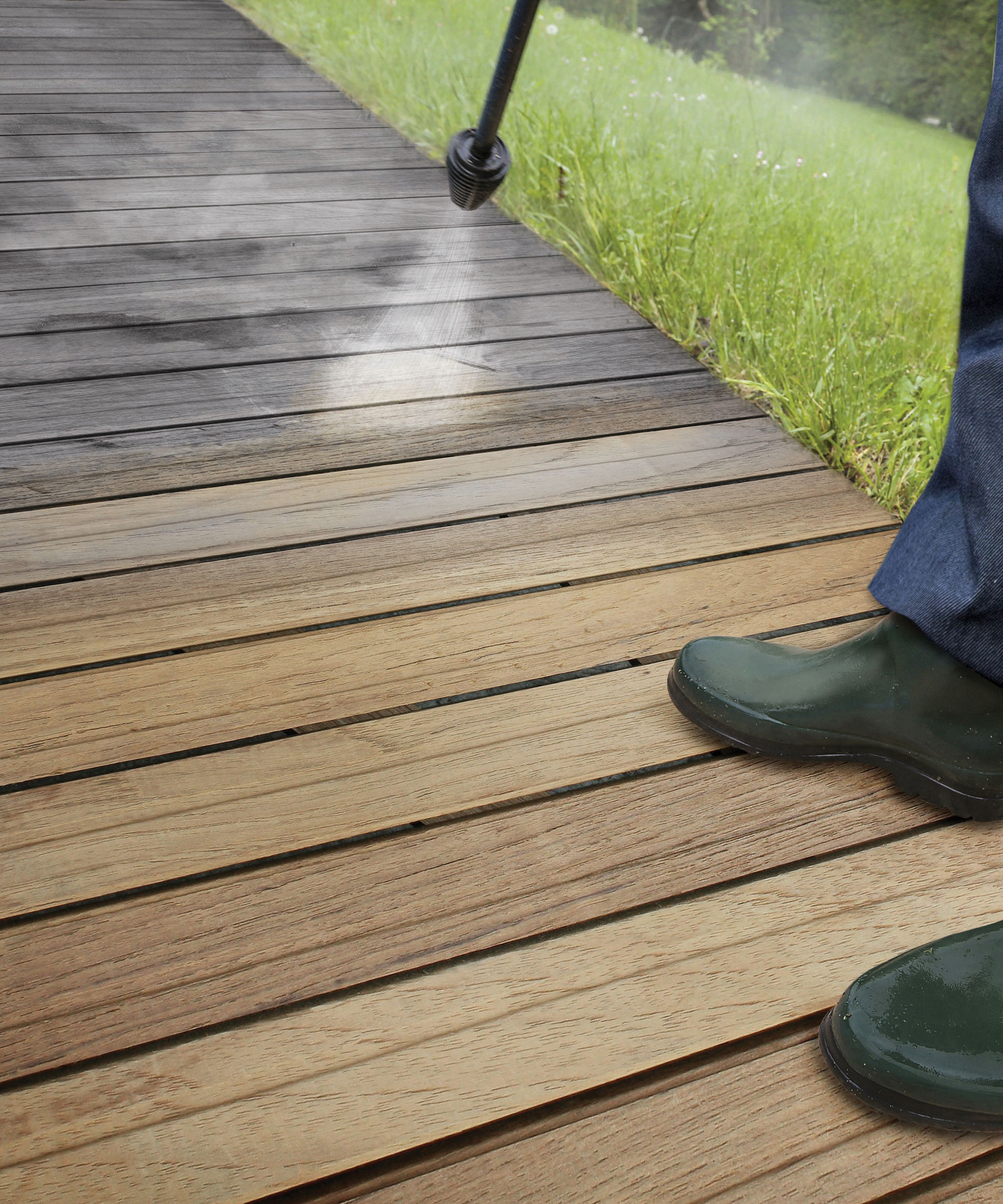
How often should I treat a deck?
Decking needs to be periodically maintained, otherwise it could start to rot and deteriorate beyond repair meaning you could have to replace your decking boards.
'How frequently you need to stain your deck will depend on the climate where you live, the quality of wood your deck is made from, the type of stain you’re using and how sheltered your deck is from the elements,' says the Homebase team. 'On average, a deck benefits from being re-stained every two to three years.'
It's important that you inspect your decking regularly to make sure it’s in good condition. Try to check your deck once a month for any damage that may cause problems down the line. If you notice any issues, be sure to rectify them right away to keep your deck in the best possible condition.
'The longer you have your deck, the more susceptible it will be to damage,' says John Dempsey. 'If you keep on top of inspecting your decking regularly, you can identify any issues and fix them before they become a much bigger problem.'
'We recommend applying one or two coats of deck oil once a year as routine maintenance,' says Richard Bradley. 'On high traffic areas re-apply one or two coats as and when required. As oil brings out the natural colours of timber, it’s a good idea to try the decking oil on a separate piece of wood before you begin the job so that you can see what the finished effect will look like.
Richard also suggests choosing a product that you can also use on fences, garden sheds and gates to make your money go further if you're looking for cheap landscaping ideas.
Remember these top maintenance tips too:
- If there are food stains or other debris on the deck, aim to remove these as soon as possible to prevent bug infestations and other damage.
- If you notice water accumulating on the deck use a broom or squeegee to clear it off before it causes damage such as rotting, mould or structural damage.
- Sweep away any wet leaves to prevent water from them seeping into the grain, especially if you're looking into slippery deck solutions.
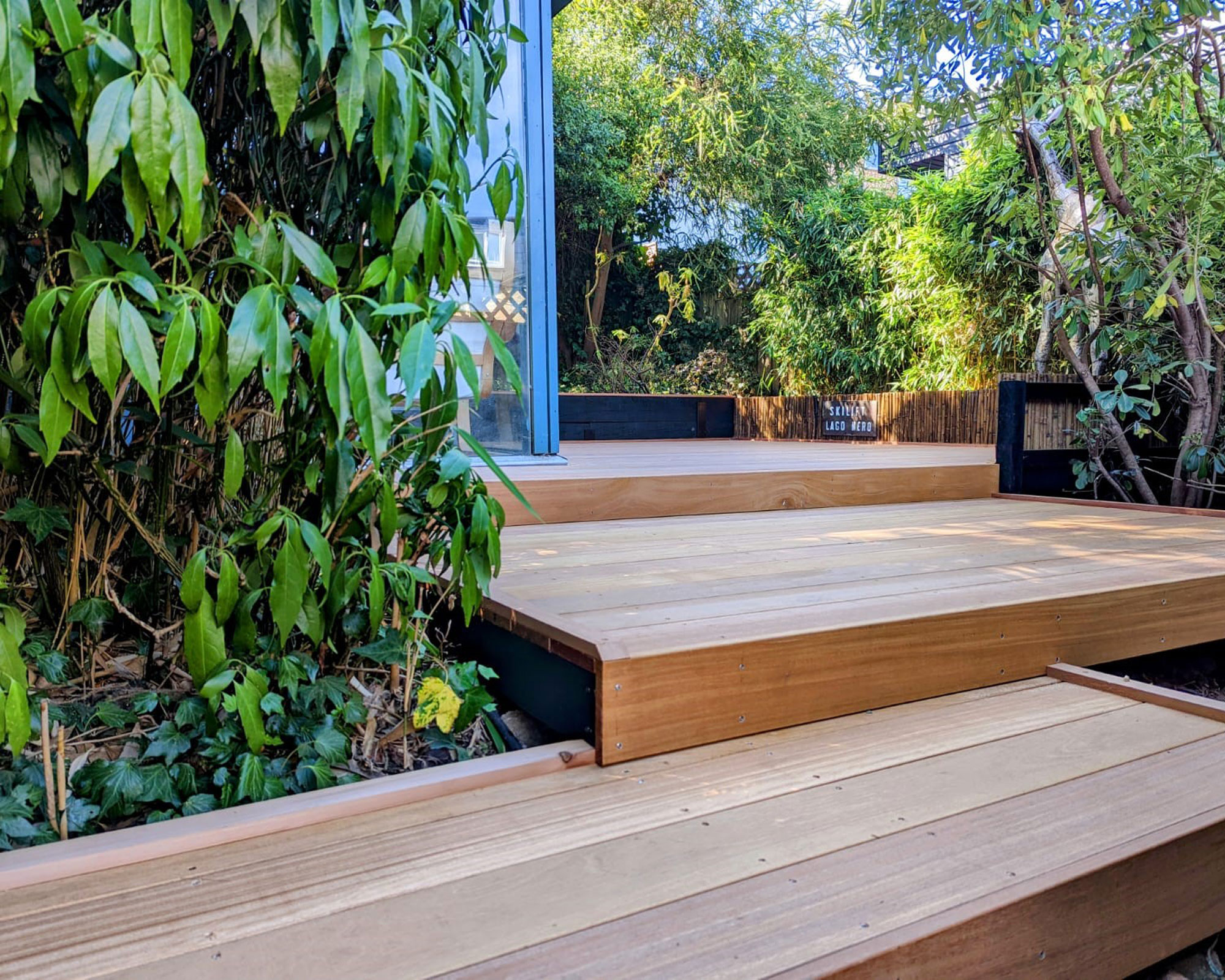
Is it a good idea to cover my deck as well as treat it?
Although learning how to treat a deck is a good idea to ensure it stays protected, you might want to consider also including some covered deck ideas in your space. If your deck is exposed to harsh sunlight and other weather types, it can start to splinter, crack or rot. Consider adding a gazebo or perhaps a retractable roof, especially if you would like to use your deck as a year-round space.
'A covered deck will help to provide shade and some protection from other weather types. A covered deck will be protected from UV rays that could damage the fibres of the deck. The cover will also protect the deck from rain and snow, which can lead to problems like rot, mold, and mildew,' says John Dempsey.
If water seeps into the cracks in the wood and freezes, this can cause the wood to splinter and may cause even bigger cracks. Covering your deck can help to prevent this type of weathering, and also make the task of treating any problems much quicker and easier.

Maze rattan gazebo from Cuckooland

Lifestyle journalist Sarah Wilson has been writing about gardens since 2015. She's written for Gardeningetc.com, Livingetc, Homes & Gardens, Easy Gardens and Modern Gardens magazines. Having studied introductory garden and landscape design, she is currently putting the skills learned to good use in her own space where the dream is establishing a cutting garden.
